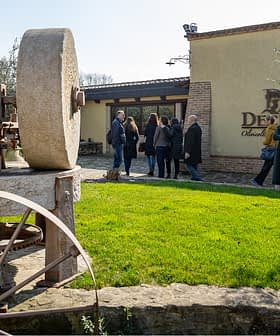Agrotourism and culinary tourism should be further developed in Greece to expand tourism beyond the summer and the beaches, so it can contribute more to the struggling Greek economy, according to Ioannis Michaletos at Balkanalysis. If the tourism, agriculture, and food production industries were more tightly linked, he argues, that could improve prospects for all three sectors by increasing foreigners’ recognition and appreciation of Greek products and, if standardized products were offered, Greek brands.
In Crete, tourists can start by driving west of Chania on the oleander-bordered national road, beside rolling hills full of olive groves with a view of the sea, to a traditional stone mill, one of the world’s oldest olive trees, a modern olive oil factory, and a botanical park and restaurant that rose from the ashes of a great fire.
The scenery is most spectacular near the Astrikas Estate in Kolymvari, with rocky hills and sheer cliffs rising behind the olive trees, in front of the sky and the distant sea. George (Yiorgos) Dimitriadis is the fifth generation in his family to own the olive groves he and his wife, Christine Lacroix, rejuvenated to produce Biolea extra virgin olive oil in the PDO of Kolymvari.
Dimitriadis is filling a special niche by focusing on high quality, small-scale artisanal organic production and reaching out to people from various nations through sustainable agrotourism and exports. He invested in creating not just a factory, but “a destination” for visitors, with a traditional three-stone mill, olive press, and bottling machinery overlooked by the mezzanine tasting room and store.
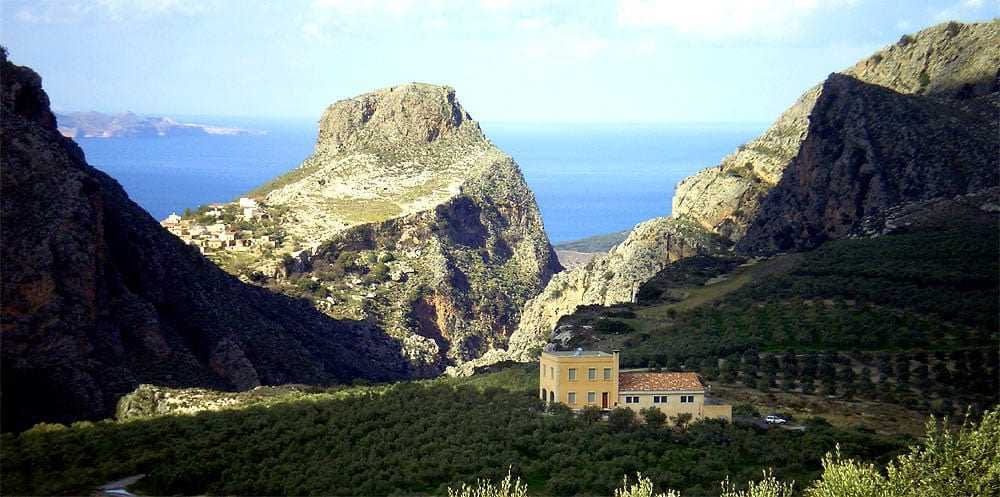
The Astrikas Estate in Kolymvari, producer of Biolea olive oils (Photo: Astrikas Estate)
Much like the mills of Roman times, but adapted to meet current health standards, Biolea’s may be the only stone mill licensed to sell olive oil in Greece today. Visitors can watch the milling and pressing from the mezzanine during the winter, or see a video about it and tour the mill during the summer. They can hear about Biolea’s environmentally conscious use of dust (rather than pesticides) to repel the olive fly, its low water and energy consumption, and its burning of olive waste to produce heat. They can learn how whole lemons or bitter oranges are poured into the stone mill along with the olives to produce pastes that become unique mixtures of oil and citrus, and how the stone milling produces an unusually mild, exceptionally healthy oil, and they can sample these distinctive products.
Next to the Olive Tree Museum in nearby Ano Vouves is a giant olive tree estimated to be at least two thousand years old (if not twice that, or more). Its age cannot be determined with radiocarbon dating, since the tree is hollow. However, much more remains than bark; attracting about 20,000 people each year, the tree looks like an amazing sculpture. New growths have appeared both inside and outside the trunk’s shell, and some branches have swirled around each other, leaving picturesque holes in a trunk that still supports large boughs with healthy leaves. Starting with the Athens games in 2004, some of the sprigs cut during pruning have been used to make the wreaths that crown Olympic marathon champions, in a return to ancient tradition.
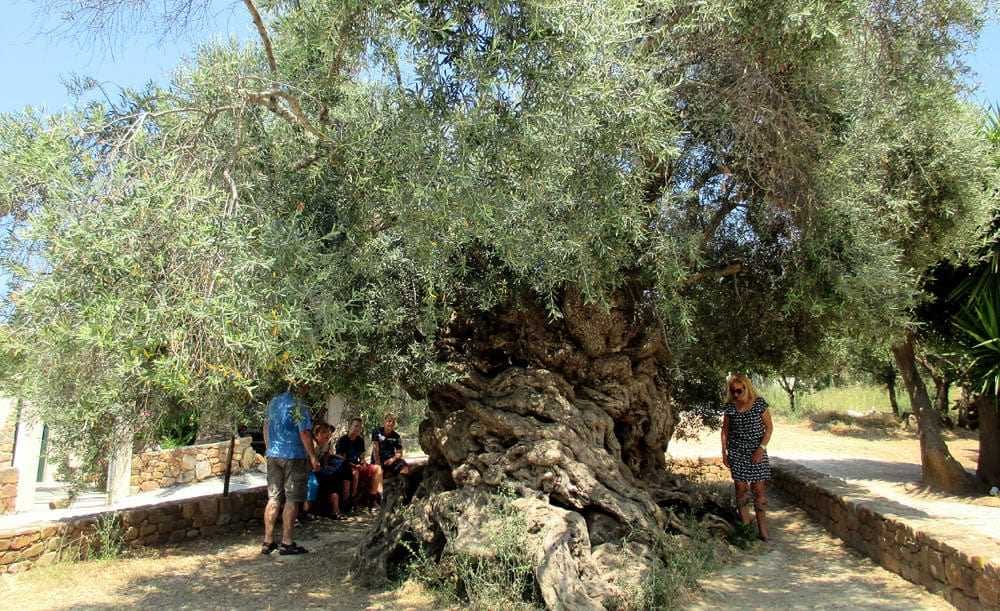
The Monumental Olive Tree of Vouves, which locals believe to be the world’s oldest (Lisa Radinovsky)
Emmanouil (Manolis) Karpadakis, Marketing Manager of Terra Creta, told Olive Oil Times that his company cooperated with the Municipality of Platanias to have a small olive mill built to extract oil from the 50 kilograms of olives produced by the ancient Vouves tree. At Terra Creta’s large, modern factory, a guide explains the olive oil production process as well as practical things such as health benefits and how to choose, use and store olive oil.
Tourists can see the two identical production lines which enable continuous extraction of both conventionally grown and organic olive oil. They can hear about Terra Creta’s eco-friendly aspects: light comes from solar tubes, with mirrors to bring sunlight inside; dry pomace, an olive waste product, powers the mill’s heating system; farm animals eat the olive tree leaves; and washing water is used for irrigation or evaporated. In the shop and tasting area in the building up the driveway, visitors can look through the half walls of office windows to the roomy bottling plant beyond them, learn about olive oil tasting, and sample some of Terra Creta’s award winning olive oils.
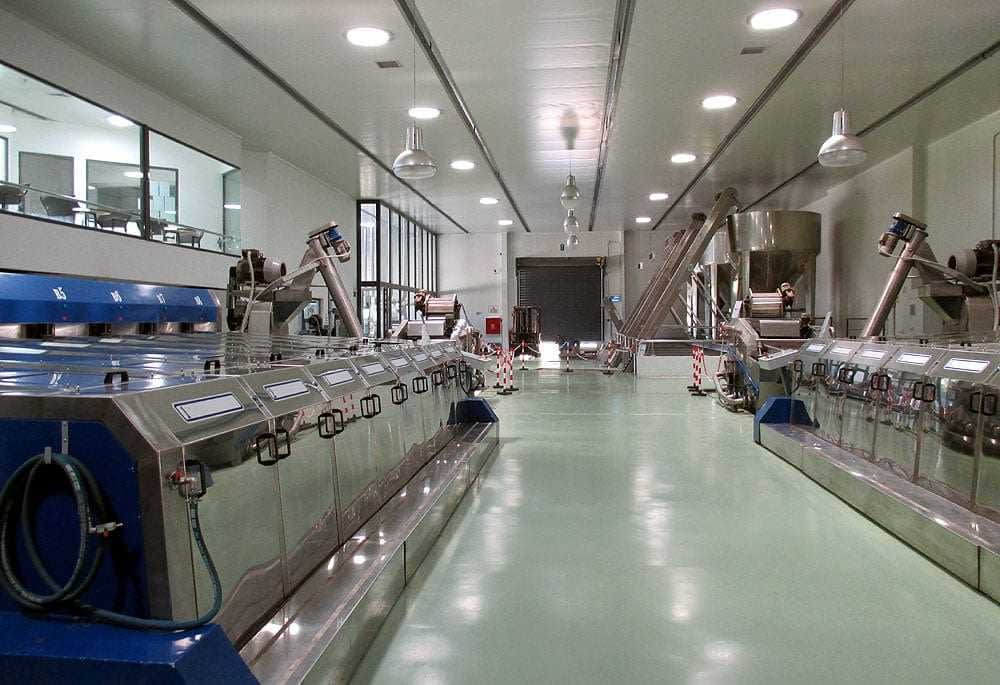
Terra Creta’s modern mill in Kolymvari (Lisa Radinovsky)
Olive oil tasting may stimulate an appetite for lunch, perhaps at the acclaimed restaurant above the Botanical Park of Crete which uses the park’s organically grown produce and olive oil as well as other locally grown ingredients in both typical Greek foods such as small pies with greens and cheese or artichokes with broad beans, and less common entrees including chicken with orange, lime, and lemon grass sauce.
The restaurant and park represent “a return to the Cretan soil and, at the same time, return to Cretan Tradition and Diet,” according to their website, after a 2003 wildfire devastated the area, destroying the orange groves and olive trees that underpinned its economy. Undaunted, the four Marinakis brothers set to work, gradually transforming their family’s burnt land into an agritourism and culinary tourism attraction that drew 32,000 visitors last year, according to Kostas Marinakis.
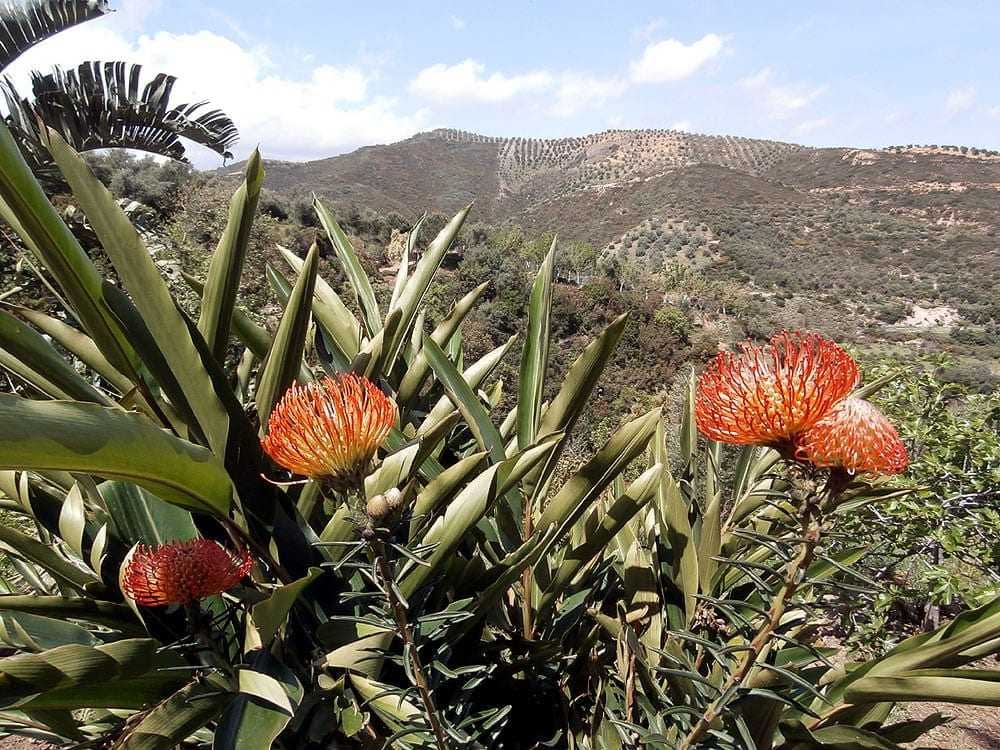
Botanical Park and Gardens of Crete (Lisa Radinovsky)
Guests walk through the extensive park, under banana trees, past tropical flowers, Grecian urns, fragrant rosemary, and orange trees to a pond with ducks, geese, and turkeys. They pause at the shaded benches, then admire the roaming peacocks and the Cretan goats before climbing the hill past the kiwi and roses, through the cool grape arbor, past geometric artichokes and brilliant geraniums, near silvery green clumps of herbs under nectarine, plum, apricot, and pomegranate trees, past a tree hung with farming tools, around and up to the hilltop restaurant. Tourists pose for photos next to scattered antiques and burnt olive tree trunks and gaze beyond them to neat rows of olive trees on surrounding hillsides.







